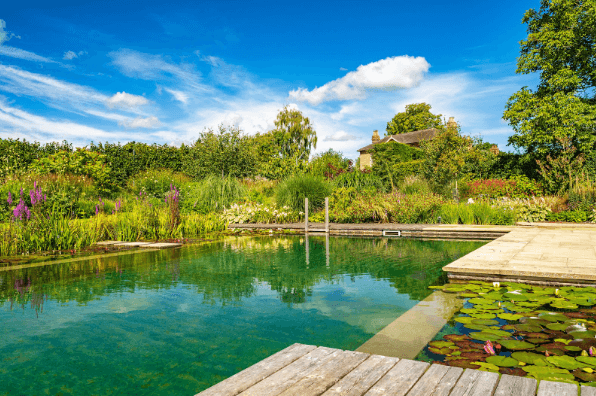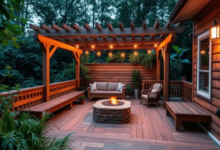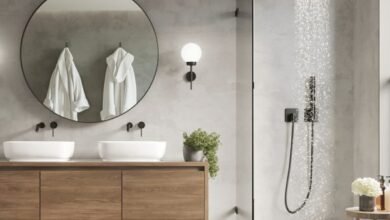How to Choose the Ideal Pump from a Swimming Pond Shop

A thriving swimming pond relies on much more than just beautiful plants or sparkling water. It needs the right equipment at its core. And nothing is more central to the health of your pond than a well-chosen pump. Whether you’re starting a backyard oasis or upgrading your current system, understanding what kind of pump you need can make all the difference.
When shopping from a reliable Swimming Pond Shop, having the right information ensures you’ll select a pump that keeps your water moving, your fish happy, and your pond sparkling clear. A quality pump forms the backbone of your pond’s ecosystem, quietly working behind the scenes to circulate water, support filtration, and promote oxygen levels. It impacts not only the health of aquatic life but also the overall enjoyment of your space—minimizing stagnant zones, reducing algae growth, and powering graceful waterfalls or soothing fountains. In short, investing time into finding the right pump is the first step toward creating a swimming pond that’s both functional and breathtaking.
The Heartbeat of Your Pond
Pumps serve as the essential force behind any functional swimming pond. They support a variety of systems that contribute to the pond’s overall health and beauty:
- Encourage oxygen exchange to support aquatic life
- Push water through filtration systems
- Feed waterfalls, jets, and other water features
- Prevent stagnant water and buildup of harmful bacteria
Without consistent circulation, ponds can quickly become breeding grounds for algae and debris, jeopardizing the entire ecosystem.
A Look at the Most Common Pump Styles
Not all ponds are created equal—and neither are their pumps. The best Swimming Pond Shop will offer multiple models suited to different needs. Here’s what you’re likely to encounter:
Underwater (Submersible) Pumps
These pumps are designed to be placed directly into the pond. They’re typically used in smaller garden ponds and offer quiet performance with easy installation. While they don’t deliver the strongest output, they’re perfect for basic filtration and gentle water movement.
Dry (External) Pumps
Installed outside the water, external pumps are ideal for larger ponds, especially those used for swimming or fish habitats. They tend to be more powerful, easier to maintain, and often more energy-efficient over long periods.
Decorative Feature Pumps
Planning a dramatic waterfall or elegant fountain? Feature pumps specialize in aesthetics. They’re engineered for water movement that enhances the visual charm of a pond and are best used alongside a primary filtration pump.
Debris-Handling Pumps
For ponds surrounded by trees, plants, or stocked with fish, a solids-handling pump is a smart choice. These can move water while filtering out leaves, fish waste, and other organic material, minimizing the risk of clogs.
Oxygenation Pumps
Air pumps are especially useful in warm months when oxygen levels drop or in fish-heavy environments. They inject air into the pond water, helping fish breathe and encouraging beneficial bacteria to thrive.
Getting the Sizing Right
One of the biggest mistakes pond owners make is choosing a pump that doesn’t match their pond’s needs. The general rule of thumb is that your pump should move the entire pond’s volume every one to two hours.
Let’s say your pond holds 10,000 liters of water: You’ll want a pump that handles at least 5,000 liters per hour. But other details can influence this:
- Do you have a lot of fish? More filtration is needed.
- Are you adding a waterfall? You’ll need more power.
- Does your piping system have many bends? Flow rate could decrease.
Most Swimming Pond Shop websites provide helpful flow rate charts to match pump performance to your exact pond dimensions.
Powering Up Waterfalls and Fountains
Adding a waterfall or fountain? That’s a great way to add movement and ambiance—but it also changes your pump requirements.
Fountains
Fountains require vertical water pressure. If your main pump is dedicated to filtration, consider using a separate pump just for the fountain. This way, neither system is compromised.
Waterfalls
Creating that smooth, cascading effect takes both strong flow and lift power. If the waterfall rises 1.5 to 2 meters above the pond, make sure your pump maintains its flow rate at that elevation. Hose size also matters; a wider hose can improve water delivery to elevated features.
Several Swimming Pond Shop collections even offer all-in-one waterfall kits, taking the guesswork out of pump selection.
Quiet Operation and Energy Efficiency
A swimming pond should be a peaceful retreat—not a noisy distraction. When evaluating pumps, take a moment to consider:
- Motor noise: Look for pumps that promote quiet or silent running
- Energy draw: Pumps that operate continuously should consume as little power as possible
- Variable settings: Adjustable flow pumps can save money during off-peak hours
Modern designs often include energy-saving modes that adapt output based on usage or time of day.
Built to Withstand the Elements
Since most pumps live outdoors, durability is critical. Premium products from trusted brands often come with specialized features:
- Sun-resistant materials to guard against UV damage
- Waterproof seals and casings to prevent internal wear
- Materials like stainless steel or heavy-duty plastic for long-lasting use
Top-selling brands found at any reputable Swimming Pond Shop—like OASE or Evolution Aqua—are known for their reliability in all weather conditions.
Ask Before You Buy
A knowledgeable Swimming Pond Shop doesn’t just stock products—it guides customers through the decision-making process. Before purchasing, ask the following:
- Does the pump come with a warranty?
- Are installation manuals or support videos included?
- What accessories (hoses, clamps, filters) are recommended for full setup?
- Is technical support available if I need help?
Even seasoned pond owners benefit from a second opinion, and pond shop staff can provide valuable insight you might not have considered.
For the Eco-Minded Pond Owner
Environmentally conscious choices are becoming increasingly available, even in pond equipment. Look out for:
- Solar-compatible options that run off renewable energy
- Programmable timers for scheduled operation
- Eco-mode pumps that reduce flow during cooler hours
While these may require a larger initial investment, the savings in electricity and environmental impact pay off over time.
Long-Term Value Over Short-Term Savings
Choosing the cheapest pump can lead to regret if it breaks down within a season or can’t meet your pond’s demands. The real value lies in a pump that:
- Matches your pond’s unique needs
- Delivers consistent performance
- Comes with strong support and long-term reliability
Take your time, consult experts, and buy from a well-established Swimming Pond Shop with a track record of quality and service.
Clearing Up Confusion
What’s the best way to estimate my pond’s water volume?
Measure the pond’s average length, width, and depth (in meters), then multiply those three numbers and multiply again by 1,000 to convert to liters.
Can I run one pump for both a filter and a waterfall?
You can, but it depends on the pump’s capacity. If the waterfall is tall or wide, or your filter has strict requirements, you might need two separate pumps.
Should the pump run all the time?
In most cases—yes. Constant circulation keeps the water oxygenated and the filtration effective. You can, however, reduce flow at night using variable speed models.
How long does a quality pond pump last?
Top-tier models last between 5 to 10 years. Choosing a brand with good reviews and a warranty helps ensure longevity.
Are solar-powered pumps reliable?
They can be, especially for small or decorative features. However, for large-scale circulation or filtration, electric pumps are usually more consistent.
Final Thoughts
Choosing the right pump from a trusted Swimming Pond Shop isn’t just about moving water—it’s about supporting the life and beauty of your entire pond. From the smallest backyard sanctuary to a full-sized swimming retreat, the right pump helps maintain clarity, prevent stagnation, and keep your aquatic environment thriving.
By understanding your pond’s specific needs, volume, layout, features, and fish load—you can make an informed decision that saves time, energy, and expense in the long run. And with the guidance and expertise of a reputable pond supplier, finding a durable, quiet, and efficient pump becomes a smooth and rewarding process.






